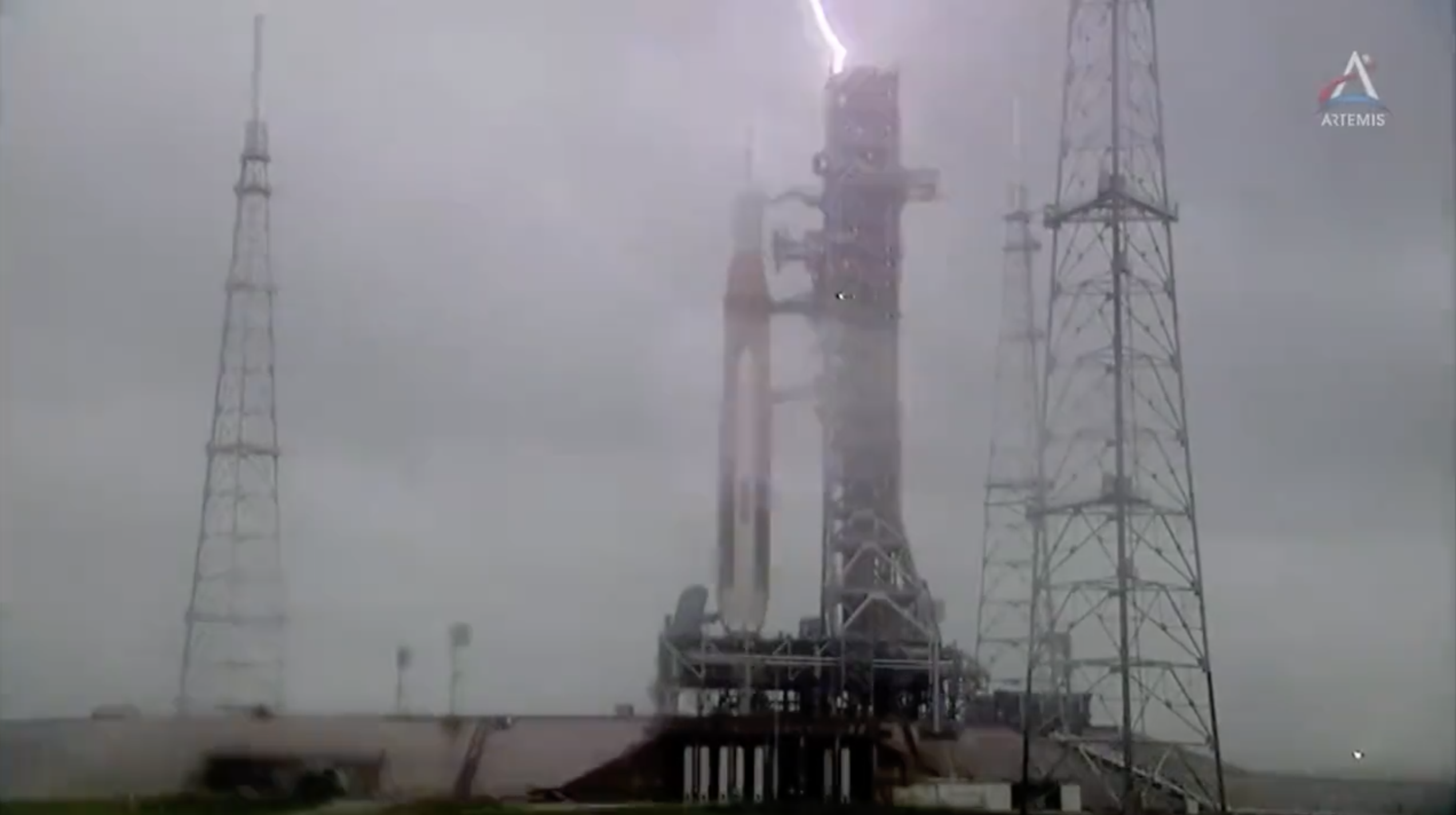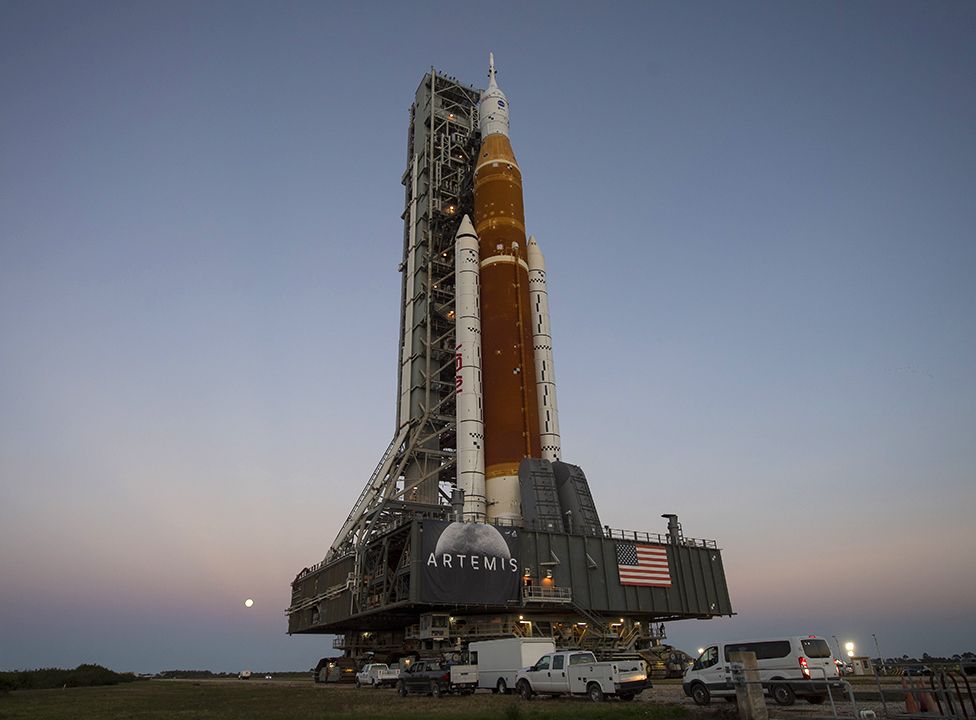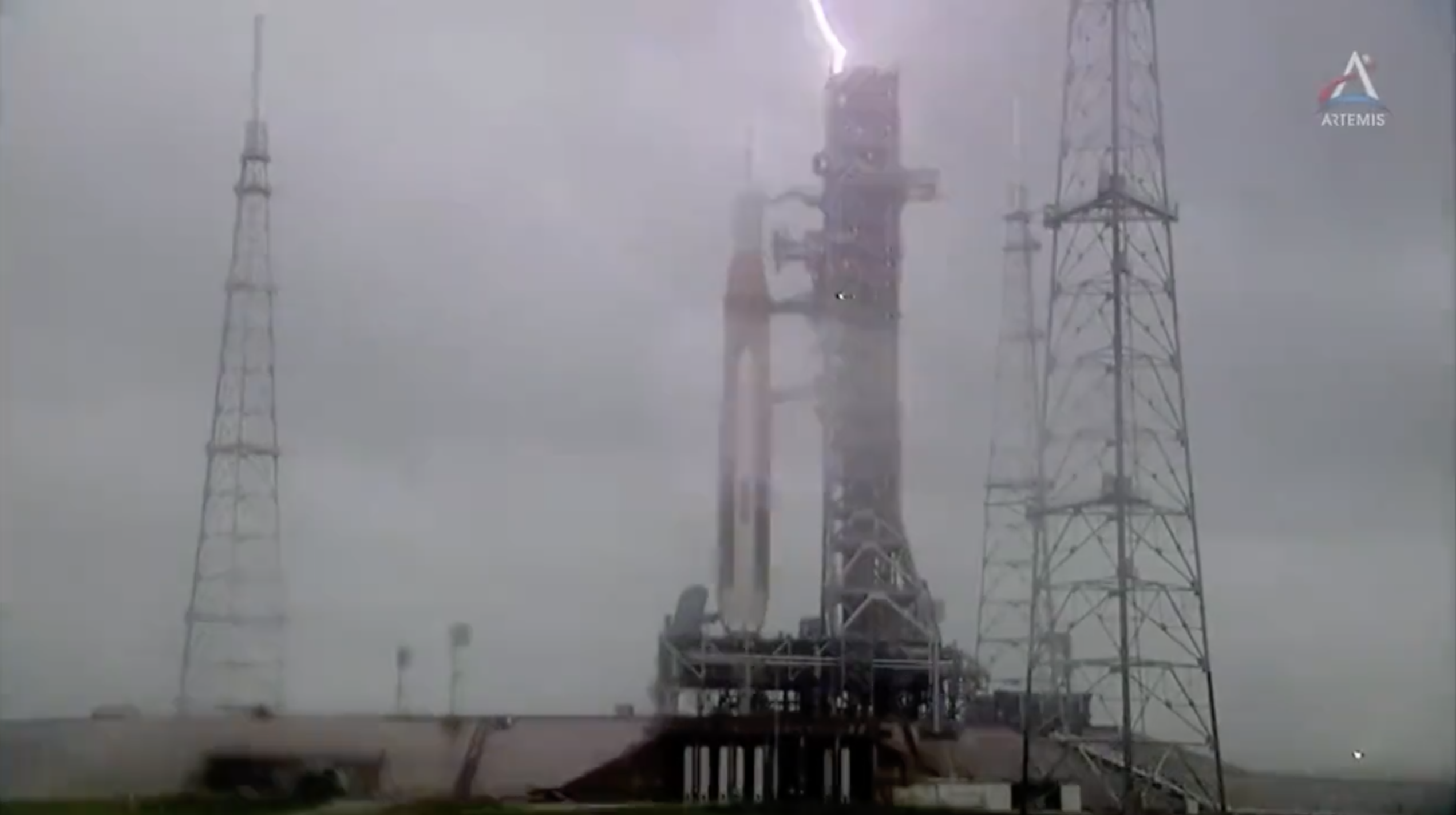
The Space Launch System’s Wet Dress Rehearsal Has Been Hectic
Before a rocket can launch, and especially the first-ever launch, there are a lot of steps and checks that are needed. These help ensure that everything is perfect and that the launch vehicle successfully leaves the pad and reaches its destination. Over the past few days, the rocket meant to return humans to the Moon known as the Space Launch System has been attempting a wet dress rehearsal.
However, this test has become very eventful over the past few days for all the wrong reasons. What was intended to be an approximately two-day test has encountered multiple unique problems and delays in a short period of time. This includes lightning strikes, safety concerns, a stuck valve, and more. All of which are keeping the SLS from completing this step and moving on to an upcoming first launch attempt.
There are a lot of different factors and components that need to be considered prior to launching and even just testing a rocket. It seems that the wet dress rehearsal has not been nearly as smooth as intended. Here I will go more in-depth into the Space Launch System’s current test progress, and some of the issues NASA has run into over the past few days.
Recent Problems

Only a few days ago the Space Launch System was rolled out for the very first time to the launch pad. Soon after this milestone, the agency worked towards the wet dress rehearsal. This test is meant to run the Artemis I launch team through operations to load propellant into the rocket’s tanks, conduct a full launch countdown, demonstrate the ability to recycle the countdown clock, and also drain the tanks to give them an opportunity to practice the timelines and procedures they will use for launch. Specifically, teams will then load more than 700,000 gallons of cryogenic, or super cold, propellants including liquid hydrogen and liquid oxygen into the rocket at the launch pad on the mobile launcher according to the detailed timeline they will use on the actual launch day. They will practice every phase of the countdown, including weather briefings, pre-planned holds in the countdown, conditioning and replenishing the propellants as needed, and validation checks.
However, this test which started only a few days ago in early April, has been much more eventful than planned. This has extended the initially intended two-day test much longer. It all started on late April 1st into the early morning of April 2nd. Around 3 a.m. on Saturday, April 2nd, at approximately L-35 hours and 20 minutes, the Artemis I launch control team powered up the Space Launch System rocket’s core stage. The plan was during the day, teams will charge Orion flight batteries, conduct final preparations on umbilical arms, and conduct a final pre-launch walk down. On April 2nd NASA tweeted saying, “Countdown is progressing smoothly for #Artemis I wet dress rehearsal. Teams have powered up the @NASA_SLS core stage, which will be loaded with over 700,000 gallons of propellant during tanking. More updates + a weather briefing at 10 am EDT.” At this point in time, the test had only recently begun and everything was going according to plan. However, this changed not long after this initial tweet. NASA provided another update tweet that mentioned, “The launch team is continuing to monitor severe weather in the area surrounding LC 39B. This afternoon, one of the three, nearly 600 ft lightning towers was struck. The lightning protection system works together to protect the rocket from lightning strikes.” They continued on to say, “The team is currently evaluating next steps and will conduct a series of procedures to make sure no systems were impacted. @NASA will provide an update once the team has assessed the intensity of the strike and established a go forward plan.” Despite these lightning strikes, the towers had done exactly what they were intended to do, and NASA continued on with the testing not long after. Specifically, during the overnight hours after determining four lightning strikes at Launch Pad 39B would not stop the countdown from continuing, the interim cryogenic propulsion stage (ICPS) and solid rocket boosters of the Space Launch System rocket were powered up. Shortly after, all non-essential personnel left the launch pad.
This leads up to April 3rd after the first string of events that slightly delayed the wet dress rehearsal. Everything had been sorted and NASA was ready to continue testing the launch vehicle. NASA continued to provide updates saying, “At around 6:45 a.m. EDT, the launch director and mission management team chair gave the “go” to begin tanking the @NASA_SLS rocket. @NASAKennedy teams will now begin loading the rocket with fuel and conduct leak checks.” However, this once again would be interrupted by another problem. Only hours later NASA tweeted again this time mentioning, “For safety, we’ve stopped the #Artemis I wet dress rehearsal. Teams are meeting now to assess next steps. We are looking at Monday, April 4 as the next opportunity to resume operations, and will have a media briefing later today.” The test was stopped Sunday, April 3 prior to tanking due to loss of ability to pressurize the mobile launcher using two fans. The fans are needed to provide positive pressure to the enclosed areas within the mobile launcher and keep out hazardous gases. Without this capability, technicians were unable to safely proceed with remotely loading the propellants into the rocket’s core stage and interim cryogenic propulsion stage. The launch control team worked to meet and review the status of the operations before deciding if they will proceed with propellant loading. During a teleconference that day, Mike Sarafin, Artemis I mission manager and Charlie Blackwell-Thompson, Artemis launch director worked with teams to troubleshoot the issue with the fans. The Space Launch System core stage, interim cryogenic propulsion stage, and Orion spacecraft remained powered up overnight.
Now on April 4th, NASA once again provided an update that they had received approval to proceed with tanking of the Space Launch System. However, as we have seen multiple times throughout this test, it was once again stopped. NASA tweeted saying, “This is why we test. We ended today’s @NASAArtemis “wet dress rehearsal” after encountering a vent valve issue while loading propellant into the @NASA_SLS fuel tank. We’re investigating, & plan to host a media teleconference.” The countdown ended after partially loading liquid oxygen into the Space Launch System core stage tank. This provided the teams a valuable opportunity for training and to make sure modeled loading procedures were accurate. This was the first time using new systems at NASA’s Kennedy Space Center Launch Complex 39B. The team was able to monitor the Artemis I core stage as it was exposed to cryogenic liquids and gather data that will inform updates to propellant loading procedures. After troubleshooting a temperature limit issue for the liquid oxygen, which delayed the countdown by several hours, the team successfully developed a new procedure for loading the liquid oxygen and filled the tank to 50 percent. Liquid oxygen is an extremely cold, or cryogenic, propellant that is maintained at minus 297 degrees Fahrenheit. During chill down of the lines in preparation for loading the liquid hydrogen, NASA encountered an issue with a panel on the mobile launcher that controls the core stage vent valve. The purpose of the vent valve is to relieve pressure from the core stage during tanking. Given the time to resolve the issue as teams were nearing the end of their shifts, the launch director made the call to stop the test for the day. A crew will investigate the issue at the pad, and the team will review range availability and the time needed to turn systems around before making a determination on the path forward. The wet dress rehearsal is the last major test before launch. This test allows the team to practice propellant loading and thoroughly check out the Artemis I rocket systems as they are exposed to cryogenics. This finally leads up to today, April 5th. As of right now it looks as if NASA is holding off on tests, and working to ensure everything is in order prior to trying again. Sometime this afternoon NASA will hold a teleconference to provide another update on the final major test with the SLS and Orion. Until then the Space Launch System will wait on the pad after a very eventful wet dress rehearsal.
Conclusion
Each day we are getting closer and closer to returning humans to the Moon. A major part of the future Artemis missions revolves around the Space Launch System. This massive rocket has made significant progress in recent months and has been attempting a wet dress rehearsal over the past few days. However, this test has been quite hectic as many different issues have arisen including lightning, valve problems, and more. While this is not ideal, it does provide the teams working with the rocket great practice for a real launch attempt. We will have to wait and see how it progresses and the impact it has on the space industry.
